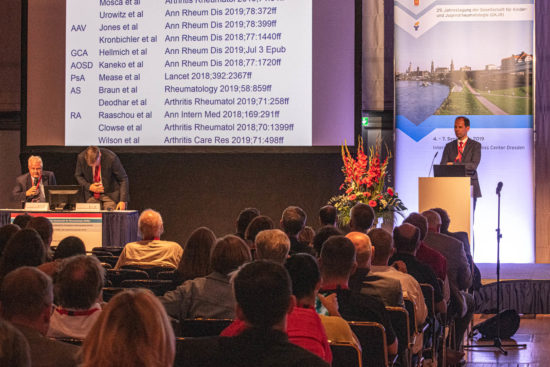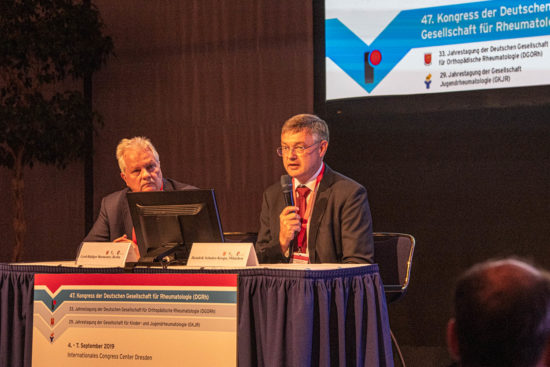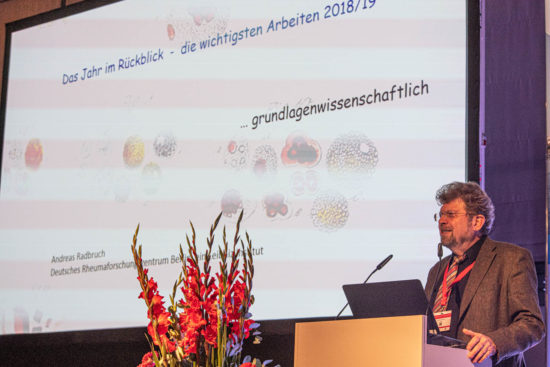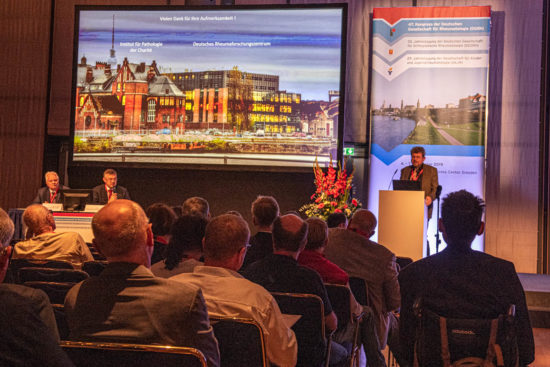From single cell observation to systemic understanding
47th Congress of the German Society for Rheumatology (DGRh) in Dresden, 4.-7.9.2019
Prior to the opening of the congress was the plenary session “Year in Review – the most important results”. During this session, the congress president, Martin Aringer from the Carl Gustav Carus University Hospital in Dresden, presented the most important clinical successes of the past year, followed by Andreas Radbruch, Director of the German Rheumatism Research Centre Berlin (DRFZ), a Leibniz Institute, who presented the most important results from basic sciences of the last 12 months.
Professor Radbruch started his presentation by introducing Rudolf Virchow, the founder of “Cellular Pathology”. In 1858, this important pathologist first realised that cells that do not function properly are the cause of diseases. Therefore, the most important aim in rheumatological research today is to identify the cells that are involved in the disease process and either “repair” them or remove them from the body in order to cure patients – on the level of individual cells! Whereas in 1650, individual cells could be examined under the microscope for the first time, today, single cell transcriptomes and -proteomes can be generated in a very short time in order to analyse which of the 28,000 genes in a cell are transcribed and expressed, in order to evaluate which genes are switched on. When we compare healthy cells with “disease-causing” cells, we can identify genes that keep the cells alive and these can then become possible targets for new therapies.
The DGRh is a German association for rheumatology with more than 1,500 members. The DGRh has been funding rheumatology research for over 90 years.
Der Jahreskongress geht noch bis Samstag, 79.2019.

 Deutsch
Deutsch




